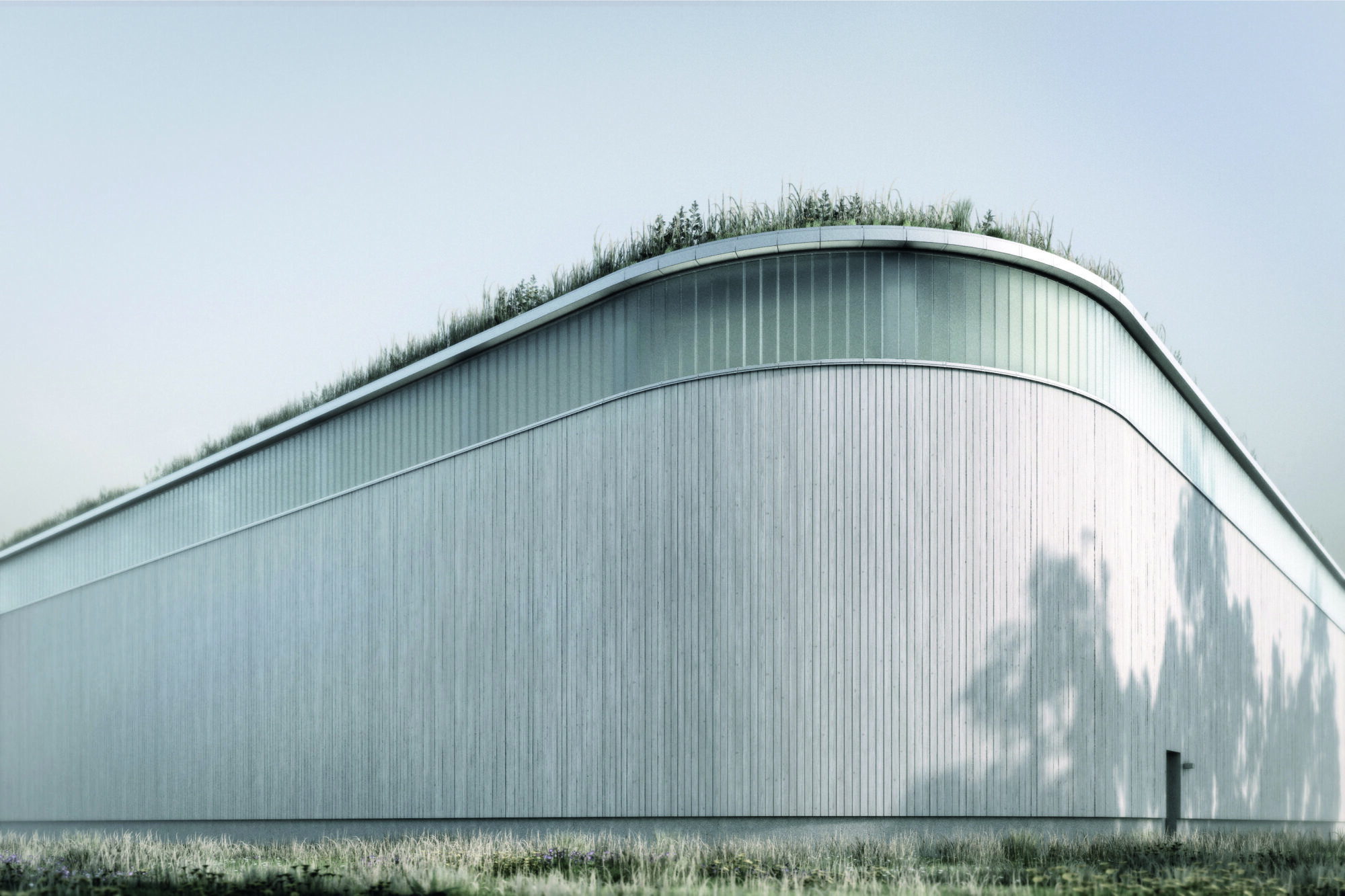2025-06-02
Less space, more nature - this is how Trelleborg's new waterworks is being designed
How do you design a 6,600-square-meter industrial building so that it blends into its scenic surroundings and adds value to the neighborhood? Anders Lundin, architect at FOJAB, can tell us. Now the shovel is being put in the ground for the new waterworks in Trelleborg.
Right on the border between the urban area of Trelleborg and the agricultural landscape of Söderslätt, a new waterworks is to be built to supply the population with clean drinking water for the next fifty years. The municipality has chosen the site primarily for logistical reasons, but it places great demands on the design. In the immediate vicinity are homes, an allotment and a half-timbered farm, and the rolling plain.
- "The large plant will not just be an intrusion into nature. We want it to give something back," says Anders Lundin, architect and head of the industrial business area at FOJAB.
Thanks to a collaborative contract with Envidan and AF Bygg, the architectural team was able to get involved in the work at an early stage. This was crucial for reducing the volume of the building, among other things.
- We did a FOJAB green analysis early on, a method we use to maximize the climate benefit of our projects. One of our specialties is to streamline the space of businesses by maximizing the use, and several square meters could be saved that way. We don't want to use more land and materials than necessary for economic, aesthetic and climate reasons," says Anders.
Loading and unloading is located to the rear where it disturbs the surroundings the least. The area around the facility should be open to the public and be pleasant to walk around. There will be meadows, trees and a small pond to support plant and animal life. A plant bed in the form of a dry meadow will be created on the roof of the process building.
"In terms of design, the waterworks is an adaptation of farm buildings - which are also a type of industrial building," Anders points out. "Rounded shapes make the large volume more compact. The shape also matches what happens on the inside, the rounded shape of the water droplet and the water handling that takes place in round vessels. At night, light penetrates through a band of glass that runs around the entire building. Otherwise, the facade uses mostly heartwood pine.
- The standing panel is an adaptation of agricultural buildings such as stables, lodges and barns - but also a small nod to the palisade of the Viking castle of Trelleborg, Anders Lundin reveals.
The water plant is expected to be operational in spring 2028.
